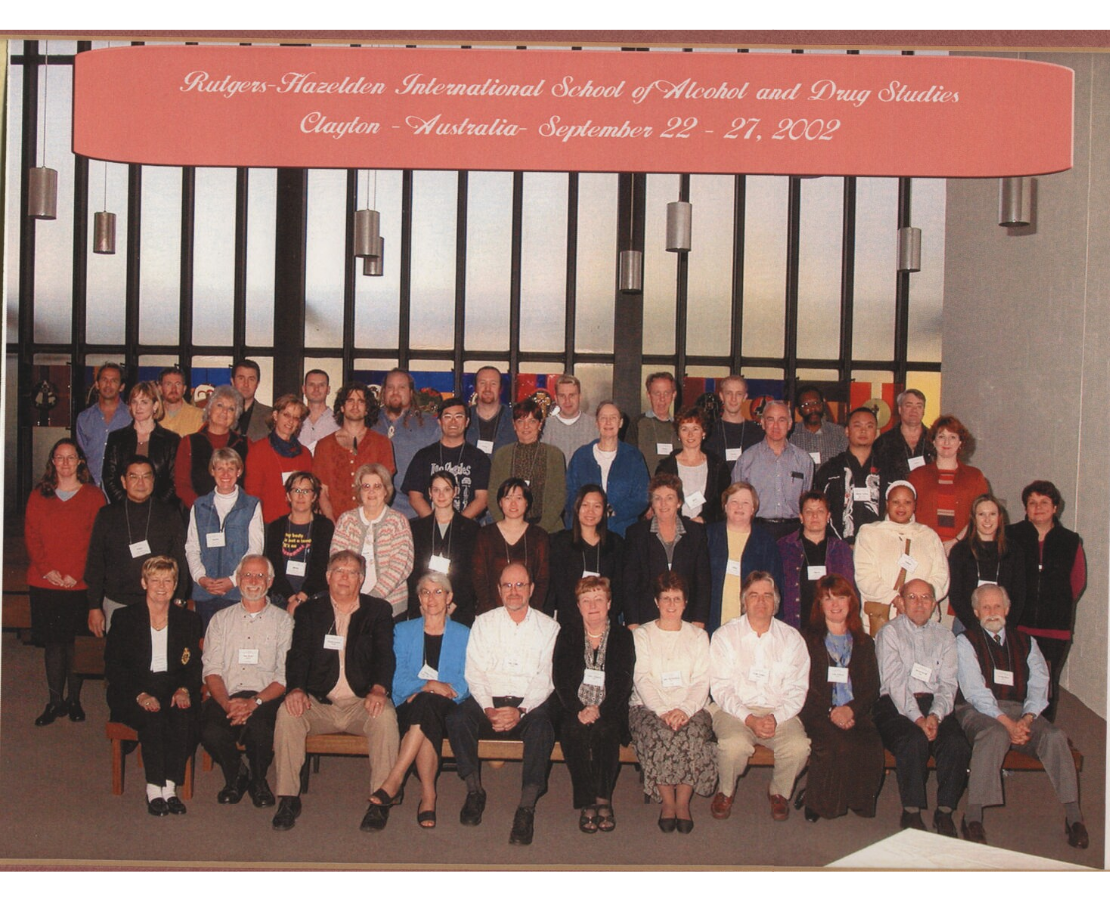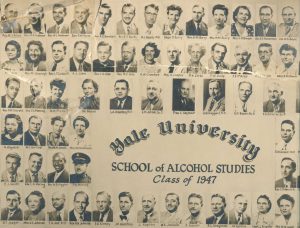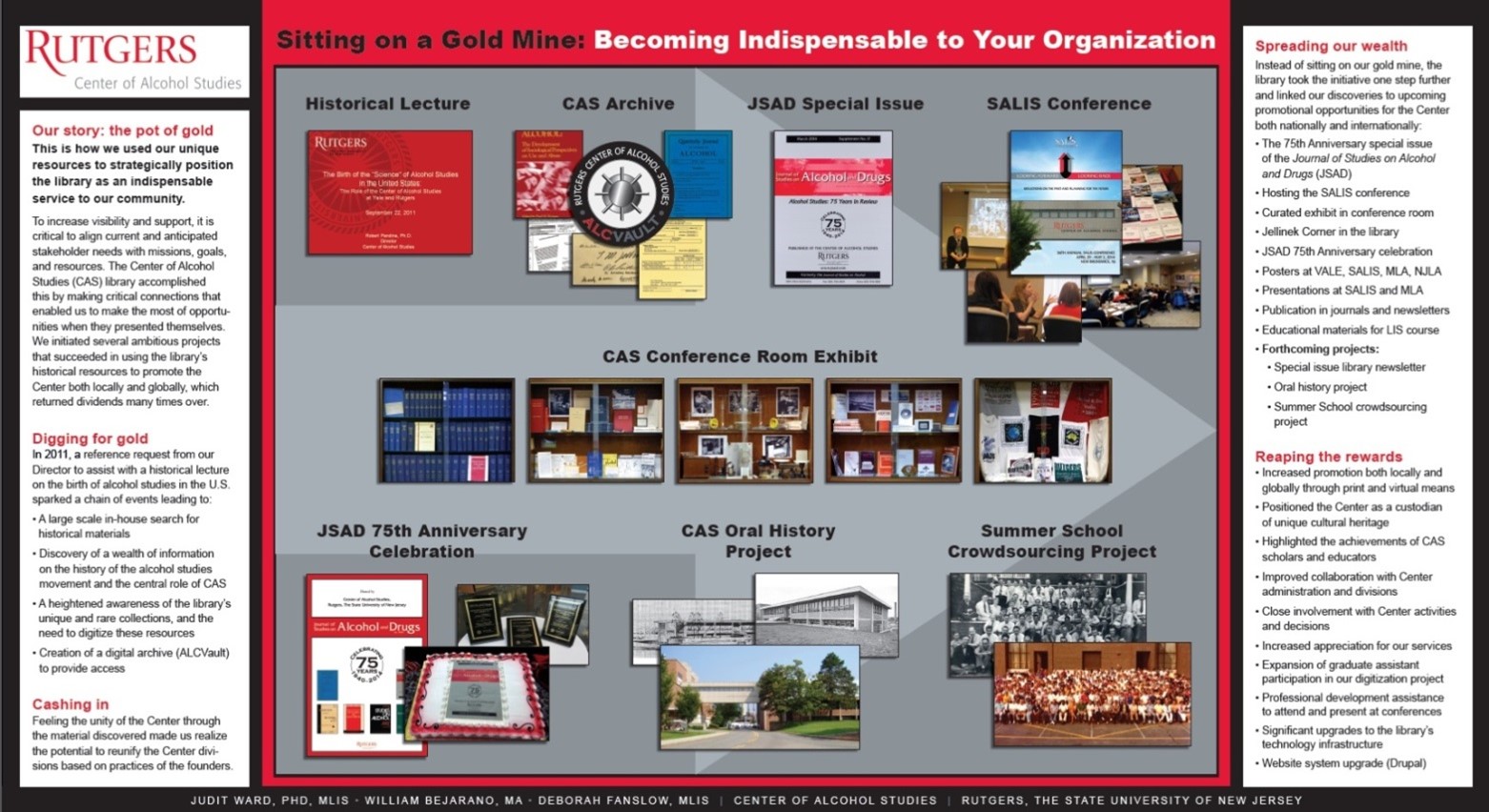I still regret that we never had a chance to fully implement the social tagging project that we planned in 2014 as part of crowdsourcing (see poster from 2014 at the end of this post). Before things went south, we were going to put out a call for all previous attendees of Summer School of Alcohol Studies to tag themselves and fellow participants, but it never happened.
Creating communities
Just like the SSAS T-shirts, group photos of the participants and instructors at the Summer School of Alcohol Studies created communities. Starting in 1943, taking a picture of the entire group at an iconic location at Yale University (1943-1961) and Rutgers University (1962-2023) was a long-awaited moment. The keepsake of the shared experience can be spotted in academic, government, and healthcare offices just as often as in private homes, framed professionally, displayed proudly.
The copies owned by the Digital Alcohol Studies Archive cannot come from a more appropriate owner. Upon her retirement, Dr. Gail Gleason Milgram, long-time director of SSAS at Rutgers, donated all photos displayed on the walls of her office at CAS (and many more unframed) to the CAS Library, hence they are considered parts of the Milgram Collection, located in the Rutgers University Libraries Annex.
SSAS group photos gone missing
However, it took quite a bit of time for these photos to make it to the Digital Alcohol Studies Archive from the defunct CAS Library. After the Library was shut down in 2016 and the collection was swiftly relocated to the Annex, I lost track of these photos, along with hundreds of smaller ones, each marked up by Dr. Milgram on the back with names, dates, and events. Either they hadn’t been transferred, or were misplaced, I simply couldn’t find them. I had been looking for the blue tote, quite an unusual sight in a library or archive, which housed the loose copies, but no luck. I was wondering about the fate of the framed pictures too.
Then, one day earlier this year, staff at CAS discovered more books and pictures in dusty, old frames, some broken, most full of fingerprints, and called me over. I was delighted to see the familiar blue tote too. The SSAS group photos were all there, even though the small pictures are still missing.
About the digitization process
Eager to start scanning, I was tempted to jump right in. However, experience teaches patience. Experience with digitization dictates thorough preparations, a.k.a. doing your homework, in terms of both content and format.
For starters, SSAS had many name variations and iterations: School of Alcohol Studies, Summer School of Alcohol Studies, Summer School of Addiction Studies, New Jersey School of Alcohol Studies, Advanced School of Alcohol Studies, Alumni Institute, and more. Not all of them were offered in each year. Add the change of the location from Yale to Rutgers to that too. To figure it out, I had to create a grid and then a spreadsheet.
Next was sorting the images: removing frames (and cutting my fingers several times), assessing duplicates for best quality, and creating piles to be scanned. If only they had been the same size! But no, I had various sizes, the largest was 28 by 9 inches from the 1955 Alumni Reunion at Yale, the smallest was 10 by 8 inches from an incredible version of the Summer School, the joint Rutgers-Hazelden International SSAS held in Australia in 2002, and anything else in between.
 The flatbed scanner was able to handle all but 17 out of the 97 photos (up to 17 by 9 inches in size), resulting in high-quality tiff images scanned at 600 dpi in most cases. Unframed pictures in sizes above 17 inches wide posed a new problem. Not only were they too large for the scanner, but due to being stored in a box a few sizes too small, most of them had creases or curled up or both (see example from 1947 above).
The flatbed scanner was able to handle all but 17 out of the 97 photos (up to 17 by 9 inches in size), resulting in high-quality tiff images scanned at 600 dpi in most cases. Unframed pictures in sizes above 17 inches wide posed a new problem. Not only were they too large for the scanner, but due to being stored in a box a few sizes too small, most of them had creases or curled up or both (see example from 1947 above).
Previously at CAS, we did some stitching: we scanned a large photo in three parts to be compiled into one image. I was hoping for better technology, better equipment, and a better outcome. Enter digital data coordinator Isaiah Bear, for the rescue, again!
Digitizing large-scale photos
The most exciting picture for me was the 20-by-9-inch photo taken at the 1961 Alumni Reunion at Yale. Dignitaries in the field all showed up, very likely to express their support during times rather difficult for CAS, resulting in the move to Rutgers. It was just as exciting to see the large-scale scanner at Alex preserve this moment for the digital future when I showed up with the 17 photos. By that time, they spent over two weeks under pressure, physically, as I placed all available dictionaries and other heavy books over them.
They still curled up on the flat surface and had to be held down with some magic wind blowing straight down on them. The most unruly photos were disciplined by a few flat magnets. Well, this is probably not the most accurate description of the process for the techies among us, but it will do as a reminder.
Scanning didn’t take too long, but Isaiah had to spend some serious time with the images afterwards because the result was outstanding: high-quality images enhanced and saved in two formats: as regular images and digital masters on the server. This also helped me expedite the process of uploading them to RUcore. The average time for uploading both images from the server varied from 60 to 90 seconds, less than what it takes me to upload a single image from my own computer with VPN. Creating metadata before uploading and ingesting to Fedora, took about the same time (especially done after hours, my favorite time, when no one else is using the system).
All in all, it’s done. These group photos forever will attest to the diverse nature of the addiction field including all affected or interested, as Yale and Rutgers interpreted and practiced it from the very beginning.
- Browse the group photos of the Summer School of Alcohol Studies in RUcore, the Rutgers University Community Repository
Apparently, the Library became dispensable. The resources did not.


